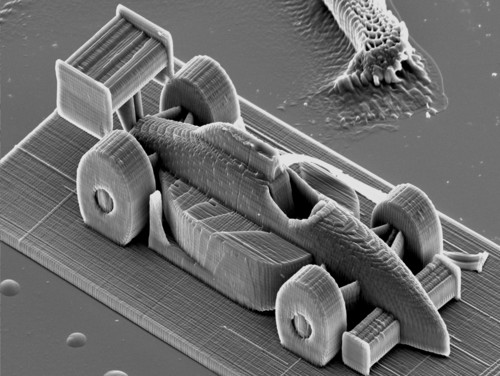3-D printer with nano-precision sets world record


The high-precision 3-D printer at TU Vienna is purportedly orders of magnitude faster than similar devices and opens up new areas of applications, such as in medicine.
The super-fast nano-printer uses a liquid resin, which is hardened at precisely the correct spots by a focused laser beam. The focal point of the laser beam is guided through the resin by movable mirrors; it leaves behind a hardened line of solid polymer just a few hundred nanometers wide. The result is a detailed sculpture measuring a couple hundred micrometers in length.
"Until now, this technique used to be quite slow," said Professor Jürgen Stampfl from the Institute of Materials Science and Technology at the TU Vienna. “The printing speed used to be measured in millimeters per second --– our device can do five meters in one second.” In two-photon lithography, this is a world record.
The scientists at TU Vienna are now developing bio-compatible resins for medical applications that can be used to create scaffolds to which living cells can attach themselves for the systematic creation of biological tissues. The 3-D printer could also be used to create tailor-made components for biomedical technology or nanotechnology.
The video below shows the 3-D printing process in real time. The very fast control mechanism connected to the laser beam produces 100 layers, consisting of approximately 200 single lines each, in four minutes.
Source: Vienna University of Technology
Related
World's smallest microphone barely visible to naked eye World's first 'printed' airplane takes to the skiesWorld's smallest electric car made of single moleculeFirst inkjet-printed carbon nanotube circuit